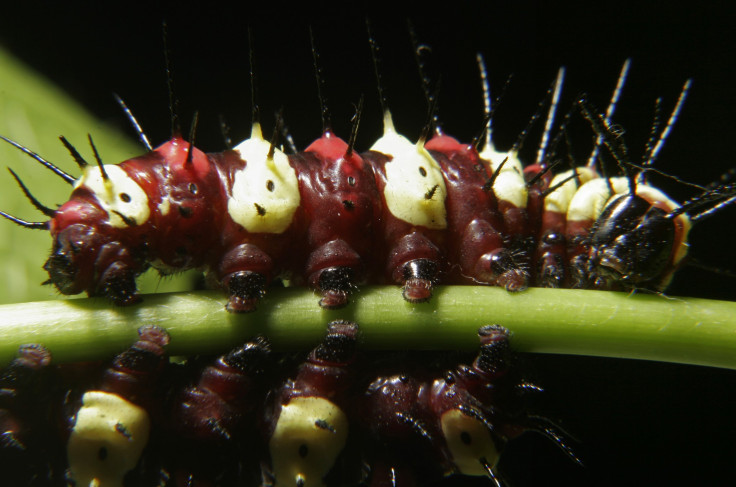Cinereous Mourner Chicks Escape Predators Mimicking Toxic Caterpillar

Birds and animals adapt to their environment for their survival, and some exhibit unimaginable features as a part of their adaptation. Likewise cinereous mourner, a dull grey bird of the Peruvian Amazon rainforests is one of the most interesting birds in the world. The chicks of cinereous mourner mimic a huge toxic caterpillar of the family Magalopygidae living around their nests to escape their predators.
The caterpillars are about 12 cm in length approximately the size of the chicks and are covered with numerous hairs that contain a toxic substance. No animals approach the insect because of its irritating toxin and thus remain safe from predators.
Initially, the researchers assumed that the chicks are ignored by snakes and monkeys because of their bright and gorgeous colour. Later on, it was thought to be because of the fluffy orange colour of chicks that resemble a moss-covered fruit that are ignored by the animals. Another researcher in 2012 suggested that it could be because of the toxin that is present on the surface of the chicks or because the chicks are mimicking some other harmful animal.
Recently, Gustavo Londono, a researcher from California, unravelled the long-time mystery. He reported that the chicks disguise themselves as the toxic caterpillar of the family Magalopygidae and cheat their predators. In addition to their brightly coloured hair, the chicks also grew unusual feathers with white tips that resembled the caterpillars’ toxic hair.
The chicks not only disguised like caterpillars, they also behaved like them when the nest is disturbed as the chicks slithered back and forth like a moth instead of opening their mouth for their mothers to feed. They only respond when they hear the special vocal cue of their mothers. This type of impersonating behaviour in animals is referred as Batesian mimicry and is seen only in very few animals in the world.
To report problems or to leave feedback about this article, e-mail: saranya@ibtimes.com.au






